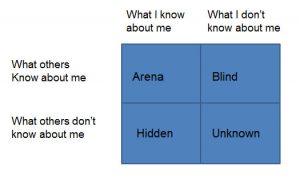EduSci – PArt 1 – Professional Teacher training
part 1 assignment
Create two Theorist’s Learning Environment (Individual Activity) Abraham Maslow & David Kolb
Abraham Maslow
Abraham Harold Maslow was an American psychologist who was best known for creating Maslow’s hierarchy of needs, a theory of psychological health predicated on fulfilling innate human needs in priority, culminating in self-actualization. Maslow a psychology professor stressed the importance of focusing on the positive qualities in people, as opposed to treating them as a “bag of symptoms.”A Review of General Psychology survey, published in 2002, ranked Maslow as the tenth most cited psychologist of the 20th century.
Humanistic theories of self-actualization
Humanistic psychologists believe that every person has a strong desire to realize their full potential, to reach a level of “self-actualization”. The main point of that new movement, that reached its peak in 1960’s, was to emphasize the positive potential of human beings.
Humanistic psychology is a psychological perspective that rose to prominence in the mid-20th century in answer to the limitations of Sigmund Freud’s psychoanalytic theory and B. F. Skinner’s behaviorism. With its roots running from Socrates through the Renaissance, this approach emphasizes the individual’s inherent drive toward self-actualization, the process of realizing and expressing one’s own capabilities and creativity
Self-actualization is a term that has been used in various psychology theories, often in different ways. The term was originally introduced by the organismic theorist Kurt Goldstein for the motive to realize one’s full potential: “the tendency to actualize itself as fully as possible is the basic drive … the drive of self-actualization.” Carl Rogers similarly wrote of “the curative force in psychotherapy – man’s tendency to actualize himself, to become his potentialities … to express and activate all the capacities of the organism.”
Carl Rogers used the term “self-actualization” to describe something distinct from the concept developed by Maslow: the actualization of the individual’s sense of ‘self.’ In Rogers’ theory of person-centered therapy, self-actualization is the ongoing process of maintaining and enhancing the individual’s self-concept through reflection, reinterpretation of experience, allowing the individual to recover, develop, change, and grow.
In my field of studies facilitating graduate employability I have been discussing and writing about self-reflections. I believe learning takes place through reflections. It starts with self-reflection, sharing with someone, listening to each other, building upon ideas and ends with experiential learning. So, the term self-actualization can be interpreted as self-reflection. If you are familiar with JOHARI WINDOW model you will understand that in order to be an open book one must be in the stage called ARENA. To reach this stage one starts with self-reflection and ends up sharing and learning through other’s feedback and own experiences. So, If I have to draw a visual image of Maslow’s way of teaching then I would start by illustrating a person who starts his journey at first with self-reflection, then continue by sharing self-reflection with others, then listening to each other’s ideas and experiences, building upon those experiences and realizing a new and improved learning and achieving self-actualization.
FIGURE: JOHARI WINDOW model
As we are discussing experiential learning we can naturally move on to David Kolb’s experintial learning model.
David Kolb
Kolb’s experiential learning theory (ELT) is a learning theory developed by David A. Kolb, who published his model in 1984. Kolb’s experiential learning theory works on two levels: a four-stage cycle of learning and four separate learning styles.
1. The experiential learning cycle
The learning cycle basically involves four stages, namely: concrete learning, reflective observation, abstract conceptualization and active experimentation. Effective learning happens when the learner progresses through the cycle. It is also worth mentioning here that a person can start from any where in this cycle as long as the sequence is followed. This cycle in another form can be seen in the image below. A person starts with an experience from some previous work and builds upon that to analyse a new problem or situation, explores it and form new understanding or results which are turned into new experiences. The cycle continues. Importnat to note here is that one must share experiences.
FIGURE: LEARNING SPIRAL Model
2. Kolb’s learning styles
There are four learning styles according to Kolb: Diverging, Assimilating, Converging, and Accommodating.
Divering people are more imaginative, whereas, Assmilating people refers to those who like to have clear and to the point information. Converging refers to the people who are problem solvers and Accomodating refers to those who like to do things pratically.
I am not going to go into the detail here but remember that people learn differently and these leanrning styles are a reminder for a teacher to remember different styles he can use to teach or simpply be aware of.
This is where I think Maslow and Kolb’s leanring styles are combined. Start with self-reflection and reach to an experince via sharing and learning by doing.
Results drawn using Kolb’s experiential learning theory:
This theory
– helps teachers develop more appropriate learning opportunities for target learners;
– helps teachers design activities that will give opportunities to learners to learn in ways that suit the learners’ learning styles; and
– focuses on activities that enable learners to go through each of the four stages of the experiential learning cycle.
So, If I have to draw a visual image of Kolb’s model I will use a classroom setting where a teacher interacts with the students both individual and in groups. It is a studnet centered approach and teacher prepares and knows about the needs of the students well in advance. Thus, prepares learning styles for individuals. Students also are given autnomy for their own learning and they do most of the studies by sharing and learning throgh experiences. If for the argument sake we consider Maslow’s learning style deals with individual most of the time then Kolb’s leanring method completes it by adopting group learning styles.
Maslow teaching style
Maslow teaching style can be used to do self-reflection. As the image also shows that there is self-reflection happening at the start and the student has to keep on going on a path which will eventually reach to self-actualization.
So, self-reflection is important, then, sharing and listening and finally, reaching to a level of understanding that teaches learning through experiences.
Kolb teaching style
As Kolb has a bit more to say about his learning style I had to use two images to somehow make a visual representation.
Kolb wants us to teach by keeping in mind different ways of learning style. So, a teacher must be prepared beforehand and makes a learning atmosphere where different kind of students with unique learning styles can work together.
Thus, the images show that a teacher in the top-left image has given some task to a group of people who have a common task. We know that each individual thinks differently so, we can assume that this group of people also think differently on an individual level but in a group they all have to work together to achieve something. The teacher is checking upon a progress of a group.
If you see the lower-right image then you can see that a teacher is giving attention to one person, whereas, the rest of the group is listening. So, the experiential learning is happening. This image also can be related to four learning styles of Kolb.
Maslow and Kolb’s model are in my opinion a perfect combination. It all starts with the self-reflection and ends up with an experiential learning. Here we can see that individual’s journey starts alone and with the help of others achieve higher level of understand or as Maslow pus it self-actualization. Even though the journey is started alone it cannot be completed with the help of others. If you keep this in mind then the next time you work in a group you will know that the best way to learn is by sharing and doing things practically.
References:
https://en.wikipedia.org/wiki/Abraham_Maslow
https://en.wikipedia.org/wiki/Humanistic_psychology
https://en.wikipedia.org/wiki/Self-actualization
https://www.simplypsychology.org/maslow.html
https://imranchohan.com/process-facilitation-basics-human-relations-and-communication/
https://imranchohan.com/process-facilitation-basics-experiential-learning/
https://en.wikipedia.org/wiki/Kolb%27s_experiential_learning




